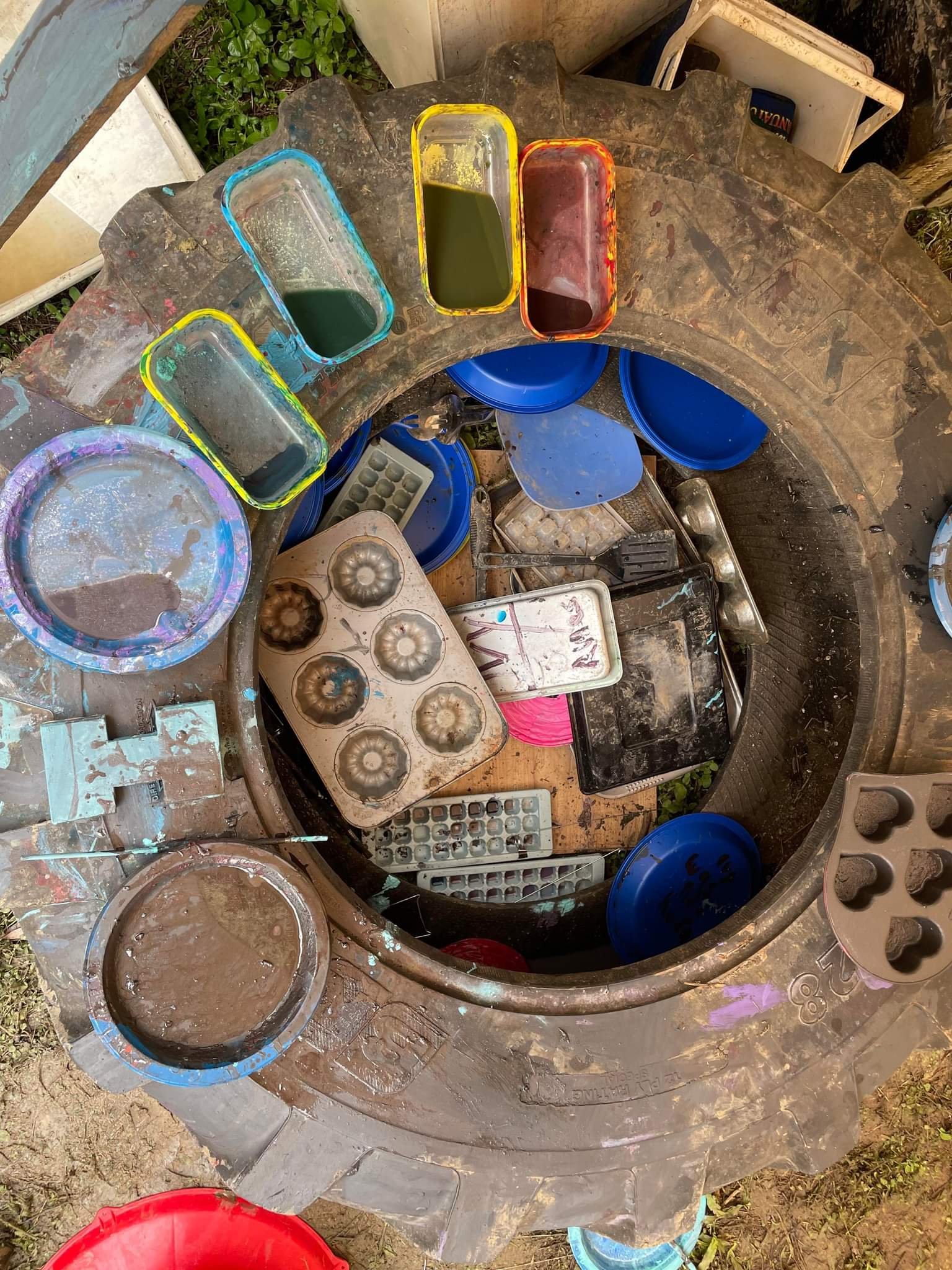As simple as the title question may seem, it is also profoundly important and constitutes, at least in the early stages of professional development and mentoring the most commonly asked one. With this in mind, I thought I would put some thoughts on paper to assist with the basics (at least as far as we perceive them), but also layer some deeper thinking into this query lest we perpetuate the current and real risk of over standardising loose parts (that statement is such paradox it hurt my head to write but the risk is real)!
With the update of the My Time Our Place Framework in Australia, and the inclusion of numerous playwork ideas, including “playwork” itself being added to the glossary, there is a strong chance that right now this is an important question to be asking. First of all, it must be made clear and firm that playwork and loose parts are not synonymous. There are playwork projects around the world that do not provide loose parts as a resource, and I can certainly attest to the fact that there are loose parts being used (at least in namesake) in many settings that do not playwork. However, in an Australian context they are often found together due to playworkers recognising the magic in Simon Nicholson’s (1971) theory on this subject and a truly manipulatable environment being one so conducive to the play opportunities for children.
So… What are the best loose parts?
From the moment we ask that question we run the very real risk of adding tremendous subjective to the entire thought process. Defining the “best” loose parts leads our mind down the track of having an expectation as to how they will be used. This is quite counter intuitive to the overarching theory behind loose parts, and their amazing potential to be non-descriptive, abstract, and allow for divergent thinking, rather than convergent. Therefore, perhaps the best answer I could give to the aforementioned question is… “I wonder”?
Now being an adult passionate about loose parts play and the theory supporting it, it is very easy to default to answering the title question, armed with the experiences I have and the spaces I have frequented. Thus, the answer may be the standard list of items; pallets, milk crates, bread crates, tarps, cable spools, pots, pans… I am sure you can all relate to this list. Now, none of these loose parts are bad, if we can even apply the term good and bad to loose parts in the first place, and I would not discourage anyone from sourcing them… But what a creation of these lists does support is the creation of multiple play spaces, with the same resources, carbon copied out all over Australia and beyond. Simon Nicholson (1971) stated in his theory of loose parts that….
“In any environment, both the degree of inventiveness and creativity, and the possibility of discovery, are directly proportional to the number and kind of variables in it.”
There are a lot of great take aways from Nicholson’s work but this phrase is often what I suggest is the biggest clue to resourcing a loose parts environment. In layman’s terms what does this effectively mean… Well in short… Different types of stuff… And a lot of them. If we search market place for pallets, or put a call out to parents for toilet paper rolls, while being a start, it will ensure we forage or receive a lot of similar stuff converging the potential of these resources in play. As challenging as it may be, it is the stuff we have never even considered, and cannot potentially predict a use for, that may make the very best addition to the space.
Another risk of the carbon copy loose parts playground pertains to the idea of external attribution theory and how this applies to children and their play (Heider, 1958). In their play children will often recreate their worlds and the narratives of their worlds as they understand them. Thus, a good loose parts play space could be said to have both a level of the divergent, the unpredictable and arbitrary, but maybe also the potential for sense to be made. It is common after all to see the children of seaside towns building boats and fishing, the children of country stock farming hunting and mustering, and urban children building cafes and shops (as well as prisons, bars and any number of other stimulus) … All these pursuits are examples of external attribution as the children take ideas from the outside world that are ever relevant to them and bring them into their play.
Bare in mind, the way in which children attribute the outside world is deeply subjective and personal, based on their own experiences and exposure to stimulus, and we as adults would be foolish to guess at the unique subjective of a mass of children. This further exacerbates the need for the space to be flexible to meet many different needs, many different dramas, many different experiences. The access via digital media to the great wide world also ensures that although the aforementioned observations of seaside, country and urban children may be true, they may also be fighting aliens, riding dinosaurs or solving the world’s climate crisis.
Whether they are playing out actual realities, or externally fuelled attribution, we also need to leave room for the most amazing resource out the there… The imagination and creativity of a child’s mind which I lack the ability to give examples of as to do so would limit the scope that this encompasses. Thus, each space, and the resources within them need to be real and responsive, to the culture, geography, and going ons to whatever community it resides in, while at the same time leaving that very real need to “to wonder”… Something a carbon copy expectation of loose parts will struggle to do.
So to summarise this piece, be intentional in your search for loose parts, your own experiences as children, and viewing other play spaces will give you hints to what might be appreciated and harnessed into a narrative. However, leave yourself open and vulnerable to surprise and mystery and be really OK with not having all the answers…
In short maybe the question should not be…
“What are the best loose parts”..?
But rather…
“I wonder what will be the best loose parts”..?
PLEASE NOTE: The pictures in this piece are from a wide range of spaces in Australia and beyond, early years and school age, pop ups and permanent spaces… These are provided to inspire, but also to challenge as growth, development and critical reflection rarely happens in our comfort zones… ;)
Angus Gorrie
Heider, F. (1958). Psychology of Interpersonal Relations. New York: Psychology Press.
Nicholson, S. (1971). How not to cheat children: the theory off loose parts. Lanscape Architecture, 62, 30-35.
Robinson, K. (2008). The Element : How finding your passion changes everything.










